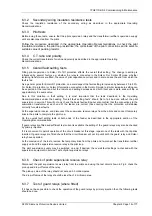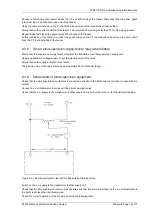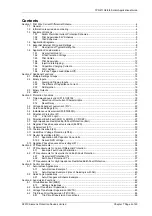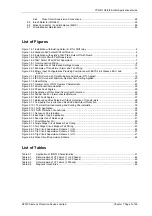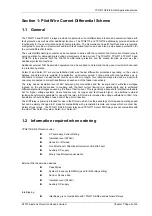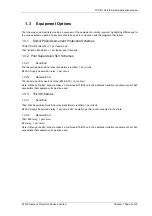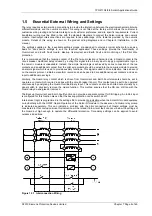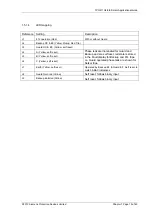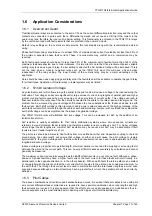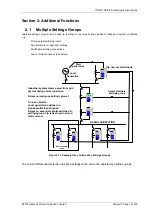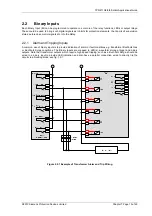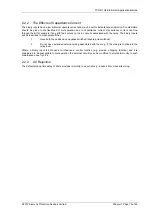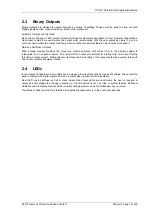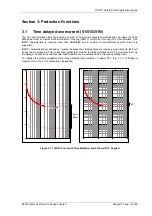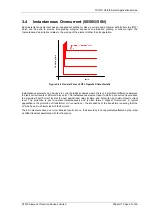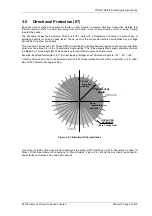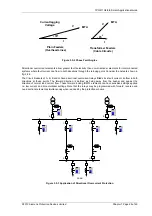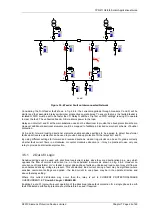
7PG2113/4/5/6 Solkor Applications Guide
1.6
Application Considerations
1.6.1 Overcurrent Guard
Traditional Guard relays are connected to the same CTs as the current differential protection relay and the output
contacts are connected in series such that a differential operation will not cause a CB trip if the current in the
guard relay (and therefore the local end) is below setting. This functionality is achieved in the 7PG2113-6 relays
by the overcurrent and earth fault elements that are provided in the numeric module.
Default relay settings on the numeric module provide this functionality along with the recommended external
wiring.
Phase fault Guard relays should be set to at least 150% of maximum load current for stability but less than 50% of
the minimum expected phase fault current. These 2 requirements may conflict and a compromise may be
required.
Earth fault guard relays should be set to less than 50% of the minimum earth fault but more than 150% of the
maximum residual expected due to load imbalance. It is important to note that if an electromechanical, variable
setting relay is used as a guard relay, if a low setting is selected the AC burden at rating will be increased. This is
not the case when a modern numerical relay such as the 7PG2113-6 since this will have a fixed burden
independent of the relay setting. The lower burden of the numeric relay may be a major advantage in this
application.
Care should be taken when applying guard relays that the fault infeed will be available to operate the guard relay
for all fault types. Application of Guard relays to radial systems may be limited.
1.6.2 5/15kV Isolation Voltage
Any electrical current which flows in a path parallel to the pilot cable will cause a voltage to be induced along the
pilot cable. This voltage can become significant for large values of current, long lengths of parallel path and higher
mutual coupling factors caused by poor screening or close proximity of current paths. This voltage can lead to
flashover inside of the relay case from the circuits connected to the pilots to the relay case and local ground. The
problem can be worsened by ground voltage shift between the two substations at the feeder ends due to earth
fault current. Earth shift voltage is often ignored in cable power systems because of the high percentage of the
earth fault current which returns through the cable sheath and armouring, however with overhead line systems the
earth shift voltage can be as significant as the induced longitudinal voltage.
The 7PG2113/4/5/6 relay will withstand 5kV rms voltage. This can be increased to 15kV by the addition of an
isolation transformer.
5kV isolation is usually acceptable for 11kV cable distribution systems where zero sequence currents are
relatively low and protected feeder lengths and therefore parallel runs are relatively short. For higher voltages
where longer feeder lengths are common15kV insulation may be required but 5kV may be acceptable if fault
levels are low or feeder lengths are short.
The pilot cores should be allowed to ‘float’ with neither core earthed at either end. Capacitive coupling to the local
ground along the cable length will ensure that voltage at either end will cause the pilot voltage to remain
symmetrical to the ground voltage such that the withstand requirement at each end is approximately half of the
longitudinal induced voltage.
Induced voltage is proportional to parallel length, maximum parallel current and the coupling or screening factor
between the pilot and the current path. This can be very difficult to assess accurately by calculation and cannot
generally be measured.
The maximum current is generally accepted as the EARTH fault level for an out of zone fault. Although a phase-
phase or 3-phase fault may have a higher fault current, the fault current for these faults will return locally in a
parallel path in the opposite direction i.e. in the other phase(s). With an earth fault, the return path may be distant
or non-parallel with the pilot such that the net current which couples to the pilot can be considered maximum for
the earth fault. The through fault current level is used in combination with the total feeder length as a worst case
scenario because although an internal fault may have a greater fault current, the parallel path will be shorter by
definition.
1.6.3 Pilot Cables
The above considerations of insulation and balance between cores, it is evident that pilot cables for use with pilot
wire current differential feeder protection are required to have special consideration when long lengths and high
fault currents are involved. It is also apparent that the effects are not easily analysed or modelled and thus in-
service experience is the most reliable basis in deciding which types of pilot will be satisfactory.
©2010 Siemens Protection Devices Limited
Chapter 7 Page 11 of 49

